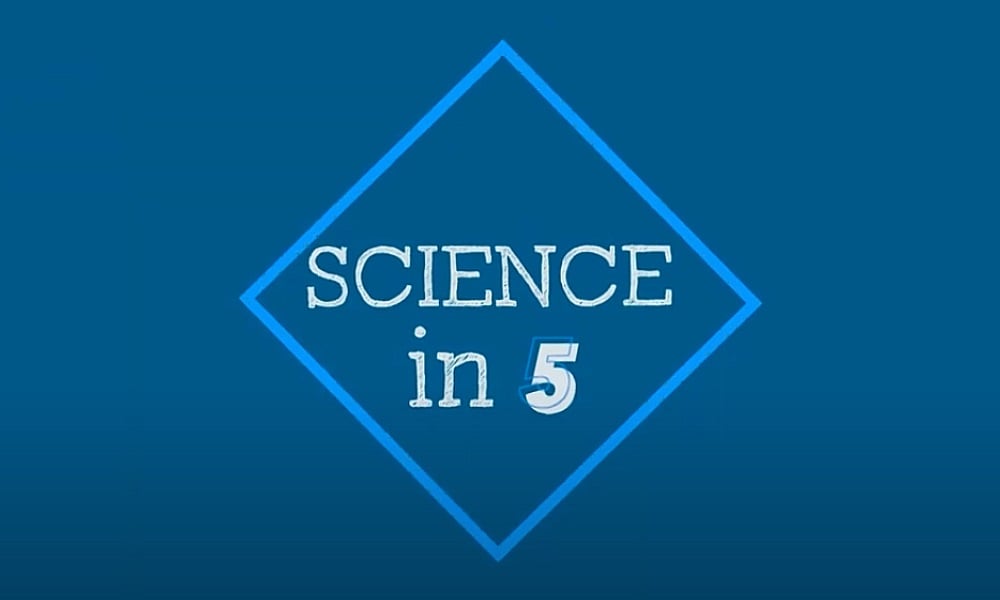Episode #72 - Genome Sequencing
Alternative media
Transcript
VGS We are talking about genome sequencing today. How does it help us track diseases? And in this phase of the pandemic, what is the trend we are seeing in countries? Do we still need to continue with genome sequencing? Hello and welcome to Science in 5, I'm Vismita Gupta-Smith. We are talking to Dr Soumya Swaminathan today. Welcome, Soumya. Soumya, let's begin with explain to us what genome sequencing is and how we use it to track diseases.
SS Thank you Vismita. So genome sequencing is a tool that scientists use to visualize or decipher the genetic code of a microorganism, whether it's a DNA or an RNA. And so the sequencing machines that we talk about basically lay out the entire nucleotide sequence and you get a full genetic code of that particular organism. This is a relatively new tool, and it's being increasingly used in public health, for example, to track foodborne disease outbreaks. When there is a cluster of food borne diseases, you want to know what is the contaminant? Where did it come from? So that you can take corrective action. Similarly, when you have an outbreak of an unknown disease, for example, encephalitis or meningitis in children. Genome sequencing tells you very quickly what that organism was, and then we can try and also link it or track it to where that could have come from. Ebola, for example, is a good example of a disease which is a zoonotic disease, and by doing sequencing, we are able to actually know where this particular case of Ebola emerged from. How far back does it go? Did it come straight from animal or was it already circulating in the human community? In fact, we're using it for monkeypox as well to understand more about the local transmission. So genome sequencing is a wonderful tool now that's been added to the toolkit for public health experts in order to quickly take action when it comes to infectious disease outbreaks.
VGS Soumya, in this phase of the pandemic, what is the trend we are seeing in countries as far as genome sequencing is concerned?
SS So as you know, this is a pandemic where from the beginning we have used genome sequencing to track this virus. And it's been extremely useful because, as you know, the virus has been changing and mutating from the beginning and we have been able to really understand which of those changes are of concern to us. And we then call it a variant of concern. And we get concerned either when these changes result in the virus being more transmissible, so more easily infectious from person to person, or it results in more severe disease or it results in the strain actually being able to overcome the immune response, the immunity that an individual has. And so over time, we've seen from Alpha, Beta, Gamma, Delta, now Omicron that the properties of the virus have been changing and we've been able to connect those clinical properties to the genetic sequence of the virus. And because scientists have been sharing these sequences on a common platform, the whole world can see now where the variants are, which variants are emerging, and public health experts can take action based on that. So it's very important to continue. We've seen a decline, a reduction in the amount of testing and surveillance and sequencing over the last few weeks. And therefore we are getting less and less visibility into what the virus is doing.
VGS Soumya, why is it important for countries to continue doing sequencing at this time?
SS Well we've seen during the pandemic how important or critical the information from sequencing was. In fact, the early identification of variants, the ability to correlate each of the variants with its very unique characteristics, to be able to track its spread around the world. It helped countries to increase or decrease their public health actions based on the data that they were seeing, and also to prepare hospitals, to prepare the facilities if there was a surge that was expected. So over time, we've become good at it. Unfortunately, now what's happening is that many countries have reduced their testing and the sequencing, and therefore we're at risk of flying blind if we do not keep up the testing and the surveillance, because we know this virus is going to be around with us for some time. It's going to change and evolve. And we really need to be able to keep track of what's happening, whether our vaccines are still effective. Luckily, they're still quite effective, but we need to be able to track that. I would also add that at the beginning of the pandemic, we had only about a third of countries that were capable of doing genome sequencing and that to many of them, very limited numbers. We've seen a huge expansion. Today, two thirds of countries have their own capacity, but there are still blind spots in the world map and therefore we need to work on strengthening those capacities, both in terms of the infrastructure, but very importantly training people, training people in data analysis and bioinformatics. Because as I mentioned, it's not just for COVID, but for all infectious diseases, that genome sequencing can give us a lot of information on how to track, how to tackle these and improve our public health response.
VGS Thank you Soumya. That was Science in 5, today. Until next time, then. Stay safe, stay healthy and stick with science.

